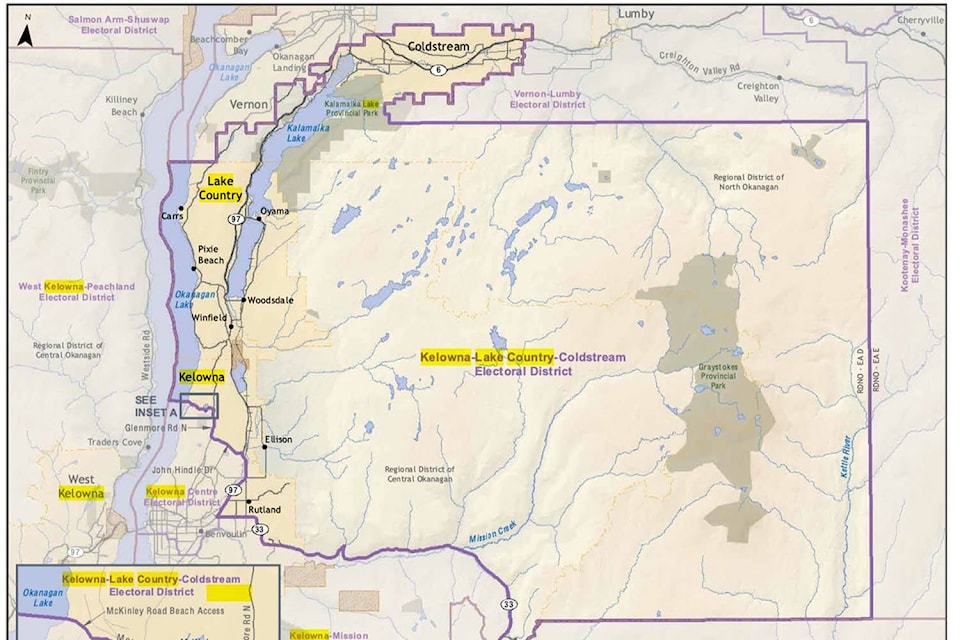The map for the next provincial election is about to get final approval and it will not be short of changes.
Attorney-General Niki Sharma Monday tabled amendments to the Electoral Districts Act that will see the creation of 93 ridings — six more than the current number — and redraw 72 ridings. Another 41 ridings will see their names change.
The proposed changes, which received first reading Monday and will come into effect prior to the next election, reflect the final recommendations of the independent British Columbia Electoral Boundaries Commission, first received by the legislature in early April.
The changes are significant. The last adjustment saw the addition of two ridings in 2015 for the 2017 election. Prior to the 2013 election, the number of ridings rose by six to 85. It had been at 79 since the 2001 election.
Metro Vancouver (Vancouver, Burnaby) and the Fraser Valley (Surrey, Langley) each gain two ridings, while Vancouver Island (Langford area) and the Okanagan (��������) each gain one seat.
Sharma said the changes will help ensure that each vote counts equally as the provincial population grew by 500,000 since 2015 with much of the growth takes place in urban areas.
The population of each electoral district should be within about 25 per cent of the so-called “electoral quotient,” which is the population of B.C. divided by the number of electoral districts. The six new districts give B.C.’s an electoral quotient of 53,773. The usual deviation range is between 40,330 and 67,216 people per district.
RELATED:
“As our province continues to grow, it’s critical that our provincial electoral districts equitably represent the people of B.C.,” Sharma said. “These changes will make sure British Columbians can continue to have confidence their voices will be heard in the B.C. legislature.”
While not free of criticism, reaction to the proposed ridings has generally been positive. But some of the changes will likely take some getting used to, if not cause some head-scratching.
Three ridings currently encompass an area from Ladysmith through Nanaimo and Parksville north to Qualicum Beach. The commission noted that the Nanaimo is too large for a single electoral district. So it proposed to divide the city into two ridings: Nanaimo-Gabriola, which includes the northern downtown core north to Departure Bay as well as Gabriola Island; and Nanaimo-Lantzville, which includes the growing northern half of the city as well as the closely linked community of Lantzville.
This change, however, means that communities to the north and south of the two Nanaimo ridings will soon find themselves in the new riding of Ladysmith-Oceanside, whose future MLA would have to drive through the two Nanaimo ridings to get to the most southern and northern parts of the riding.
Meanwhile, Kamloops will retain both ridings, but they will come with different names and different shapes.
Kamloops’ urban core will find itself in the riding of Kamloops Centre, which roughly resembles a postage-stamp. It includes all of the urban parts of the riding Kamloops-South Thompson represented by BC Liberal House Leader Todd Stone and the urban parts of Kamloops-North Thompson represented by BC Liberal Peter Milobar for a total population of some 60,000.
As for the much larger riding of Kamloops-North Thompson, it combines all of the suburbs and rural parts of Stone’s riding with the suburban and rural parts of Milobar’s riding, which currently also includes communities north of Kamloops like Clearwater.
wolfgang.depner@blackpress.ca
Like us on and follow us on .



